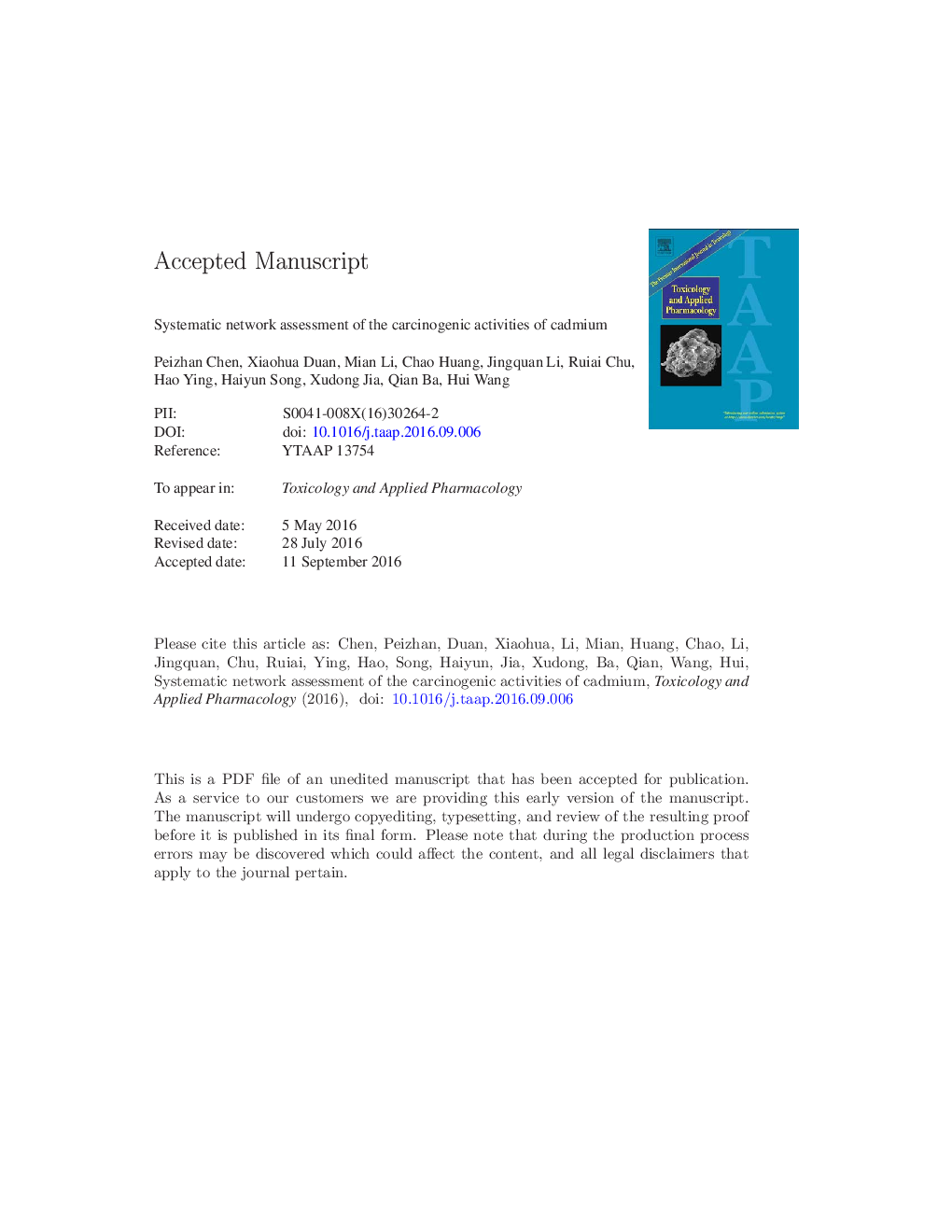| Article ID | Journal | Published Year | Pages | File Type |
|---|---|---|---|---|
| 8539194 | Toxicology and Applied Pharmacology | 2016 | 40 Pages |
Abstract
Cadmium has been defined as type I carcinogen for humans, but the underlying mechanisms of its carcinogenic activity and its influence on protein-protein interactions in cells are not fully elucidated. The aim of the current study was to evaluate, systematically, the carcinogenic activity of cadmium with systems biology approaches. From a literature search of 209 studies that performed with cellular models, 208 proteins influenced by cadmium exposure were identified. All of these were assessed by Western blotting and were recognized as key nodes in network analyses. The protein-protein functional interaction networks were constructed with NetBox software and visualized with Cytoscape software. These cadmium-rewired genes were used to construct a scale-free, highly connected biological protein interaction network with 850 nodes and 8770 edges. Of the network, nine key modules were identified and 60 key signaling pathways, including the estrogen, RAS, PI3K-Akt, NF-κB, HIF-1α, Jak-STAT, and TGF-β signaling pathways, were significantly enriched. With breast cancer, colorectal and prostate cancer cellular models, we validated the key node genes in the network that had been previously reported or inferred form the network by Western blotting methods, including STAT3, JNK, p38, SMAD2/3, P65, AKT1, and HIF-1α. These results suggested the established network was robust and provided a systematic view of the carcinogenic activities of cadmium in human.
Keywords
FFQThe International Agency for Research on Cancersodium dodecyl sulfate- polyacrylamide gel electrophoresisIARC یا International Agency for Research on CancerSDS-PAGEKEGG یا Kyoto Encyclopedia of Genes and Genomes Kyoto Encyclopedia of Genes and GenomesCarcinogenesisfood frequency questionnairesCadmium
Related Topics
Life Sciences
Environmental Science
Health, Toxicology and Mutagenesis
Authors
Peizhan Chen, Xiaohua Duan, Mian Li, Chao Huang, Jingquan Li, Ruiai Chu, Hao Ying, Haiyun Song, Xudong Jia, Qian Ba, Hui Wang,
